Do you have a dream to sail off into the sunset … either when you retire or sooner? Toes in the water, snorkeling in the world’s biggest aquarium, sunsets, dolphins dancing with the bow, wind in your hair, aaahhhhhh….
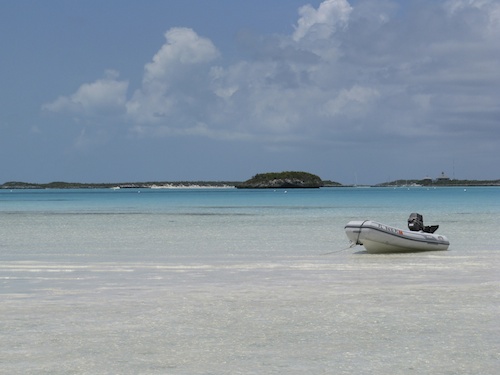
Making dreams come true takes a bit of planning. Especially big dreams like sailing into the sunset. The old adage says “How much will cruising cost? As much as you have.” And it seems true. We met a British family of 4 sailing around the world on a tiny 27 foot sailboat – we met them in Panama just as they were getting ready to go through the canal. Their budget was minimal and the boat was minimal. But they were living the dream. You may have to compromise and not sail away in a luxury yacht, but the view from our 37 foot sailboat cockpit is just as magnificent as the view from the mega-yacht! Here are some tips for financial aspects of going cruising, part time or full time, based on our personal experience.
1. First, if you own a house, decide whether to keep it. While it may make financial sense to sell the house to help finance the boat and new lifestyle, we recommend keeping a land base at least the first two years of cruising. You never know what might happen and having a land base makes sense unless keeping it makes the dream unfeasible.

2. If it’s a bigger house, consider moving into a smaller location. And if you’re considering moving, consider the advantages of a condo – less maintenance required by you while you’re off sailing and having fun.
3. Plan to be debt-free when you sail off into the sunset. Pay off the house, the boat, the car, the credit cards. It’s important to be debt free. There will be enough expenses along the way that you don’t want to be paying for a mortgage or car payment at the same time.
4. When you buy a boat, remember that the price of the boat itself is only part of the equation. You will likely want to customize it, update some electronics, and who knows what else. A good rule of thumb is to allocate 75% of your purchase price for the boat itself and the other 25% for whatever you decide needs done to the boat, whether you’re weekending or heading off into the deep blue sea. We spent much more than the 25% we originally allocated, but the boat would have been safe if we hadn’t invested in a watermaker and other expensive “luxuries”.
5. Decide whether to sell the car. Most commuterCRUISERs, us included, will need their cars when they return to the US for the “off season”. Consider keeping only one car instead of two – saves on insurance and maintenance.
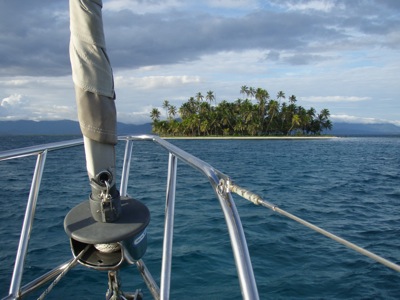
6. Figure how to set up finances. We own two credit cards and a debit card. We use one credit card exclusively when we’re out of the country – it’s a VISA which is accepted most places where credit cards are accepted. Keep in mind, in some cruising locales, credit cards are not accepted. Our other credit card is our normal credit card while in the US. We like to keep them separate – we figure there’s a higher likelihood of the information being stolen while out of the US than at home, but these days maybe that’s wishful thinking. In order to not get late fees in case we’re nowhere near an internet cafe to pay the monthly bill, we set up an automatic $100 monthly payment. We pay it off monthly to stay debt-free, but at least if we weren’t back to civilization before the due date, we weren’t charged penalties.
7. We check our finances – the bank, investments and credit card charges whenever we have internet access. We prefer to use our own laptop or IPad to check finances and always sign out of the institution if we’re on public wifi to minimize hacking attempts. If we’re forced to use a local internet location because wifi is not available, we ALWAYS not only sign out of our financial institutions but also clear the history on the machine of all of our information after we’re done. I don’t know if that really helps keep us safe, but it makes me feel better.
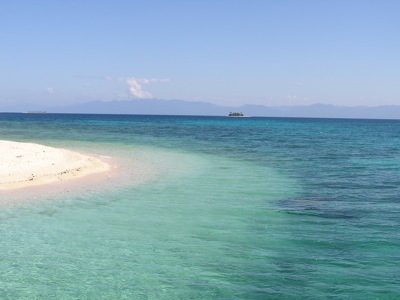
8. We minimize using anything that would allow access to our checking account – i.e. debit card – while outside the country. While the banks keep assuring us that no one can access our funds, it just feels safer.
9. We used our VISA to get foreign currency in ATM machines (or inside the bank) – paying the fees seemed trivial compared to exposing our checking account.
10. A charge card insulates you from fraud somewhat, but be aware that you may have a charge card simply not work in a foreign location. Like one year when for no explainable reason, our bank blocked our VISA and it wouldn’t work in Panama. Trying to provision for a winter in the San Blas Islands when the VISA won’t work is more than just a bit frustrating. Calling the bank, (on a satellite phone at $1.50 a minute….) they would swear that they had removed the block. We’d try the next day only to find out that it still didn’t work. Apparently it wasn’t our card, that particular bank – CITI Bank – decided that Panama was much too risky to let us charge anything. Good thing we had a backup (although we were reluctant to use it) – the bank kept telling us they’d overnight us a new card, but overnight doesn’t work well in the far reaches of Panama and we weren’t in a major port at the time.
11. We keep a minimal amount in checking just in case someone does access our debit card information and keep a savings account so we can easily transfer money between the two.
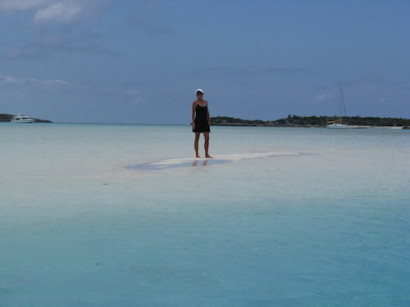
12. Figure out how much cash to take with you aboard. We always start with more cash than we think we’ll need – somehow it has a habit of going quickly. Also, be sure to take small bills, not large bills. $50 bills were rarely, sometimes never accepted – even at a bank because they were suspicious of them being counterfeit. And $100 were also problematic, more because the only way to spend them is to find an open bank that will make change. We took primarily $20’s, $10’s, $5’s & lots & lots of $1’s. Find places to hide them inside the boat – hopefully places that the typical smart robber might not find. Obviously under the mattress is not a good location. 🙂 We separate our case into mini-stashes and have multiple good hiding places.
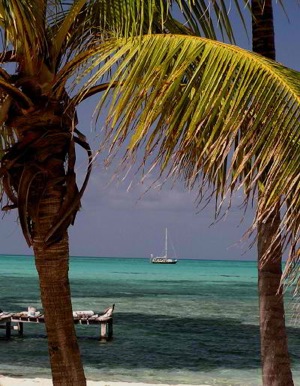
13. Fitting that taxes should be the unlucky #13! Don’t let getting your taxes completed stand in the way of your dream! Talk to a CPA or tax-planner who can guide you. We always prepay what we anticipate owing and then file an automatic extension for April 15th. If we’re unavailable in April, we don’t have to worry about getting all the paperwork assembled and actually filing the taxes. It costs a bit to have the CPA handle it all, but it’s well worth it for our freedom. If you don’t want to use a CPA, how about a trusted family member?
Now that you’ve got the finances figured out, GO! Anyone else with tips on financing the dream? Please leave a comment and share! Cheers! Jan
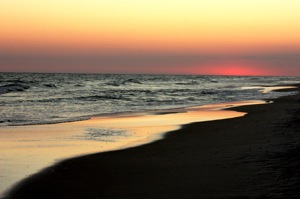










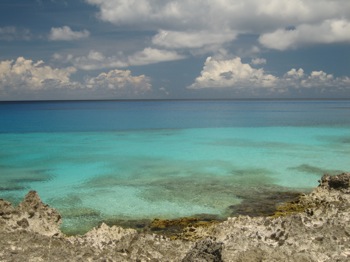


Great info!! Especially in regards to credit card use. I agree that being debt free is ideal before cruising, however, it’s not always possible and cruising doesn’t necessarily have to be delayed because of it (although credit card debt is a whole other monster!). We’ll rent out our house to cover our mortgage and account for house related costs and college loan payments on top of our anticipated cruising budget. No matter your financial situation, you can make it work with a little creativity and discipline! Thanks for the awesome tips!
We totally concur, Jackie. The important thing is to minimize land-based expenses. Renting your house is an option many cruisers opt for the cover the mortgage while they’re sailing away — and it has the advantage of allowing you to keep the land-base/house even though it’s not paid off, it’s not dragging down the finances. And yes, anyone can make it work, it’s a matter of dedication to the cause and willingness to compromise. Cheers! Jan
Why would anyone, with half a brain, want to go back to ‘a house’ with all the crapola that goes with it, after being on a boat for more that a couple of months?!
If I’m able to get on a boat somewhere, I have serious reservations about being a land-dweller again. It has become an insane existence here on land. Just insane.
Robin — I know how you feel! Going cruising part-time forced us to downsize and simplify everything. At one point we were running away from the rat race too. But these days it’s fun coming back to the lake to spend the summer … slalom skiing, racing the YFlyer (18′ one design scow sailboat), bike riding, hanging out with family and friends. For us it’s the right answer. Whatever your right answer is, enjoy!!! Cheers! Jan
I know to check the credit card statements, some cards will charge you a small fee for simply using it in a foreign country. Great idea about being proactive with the use of credit cards and not using debit cards to thwart identity theft. We do it here in the states. And as far as what I found to be the cost for cruising; Plan on the cost of the boat being half of what you’ll need to get off the dock, more if you have to replace an engine or other expensive repairs. Having skills that I can barter with might help offset expenses?
Thanks,
s/v Renasci
I saw in another post that you had throw-away (well, non-permanent pre-paid) cell phones with data while traveling – primarily to avoid overseas charges. You would be better served conducting your financial activities via that secured data line (using it as a hot-spot for your iPad/tablet/laptop) rather than over a public, non-encrypted wifi (e.g. hotel lobby). Consider setting up your hotspot while at anchor, rather than using free wi-fi, for anything that you really don’t want in the hands of someone else.